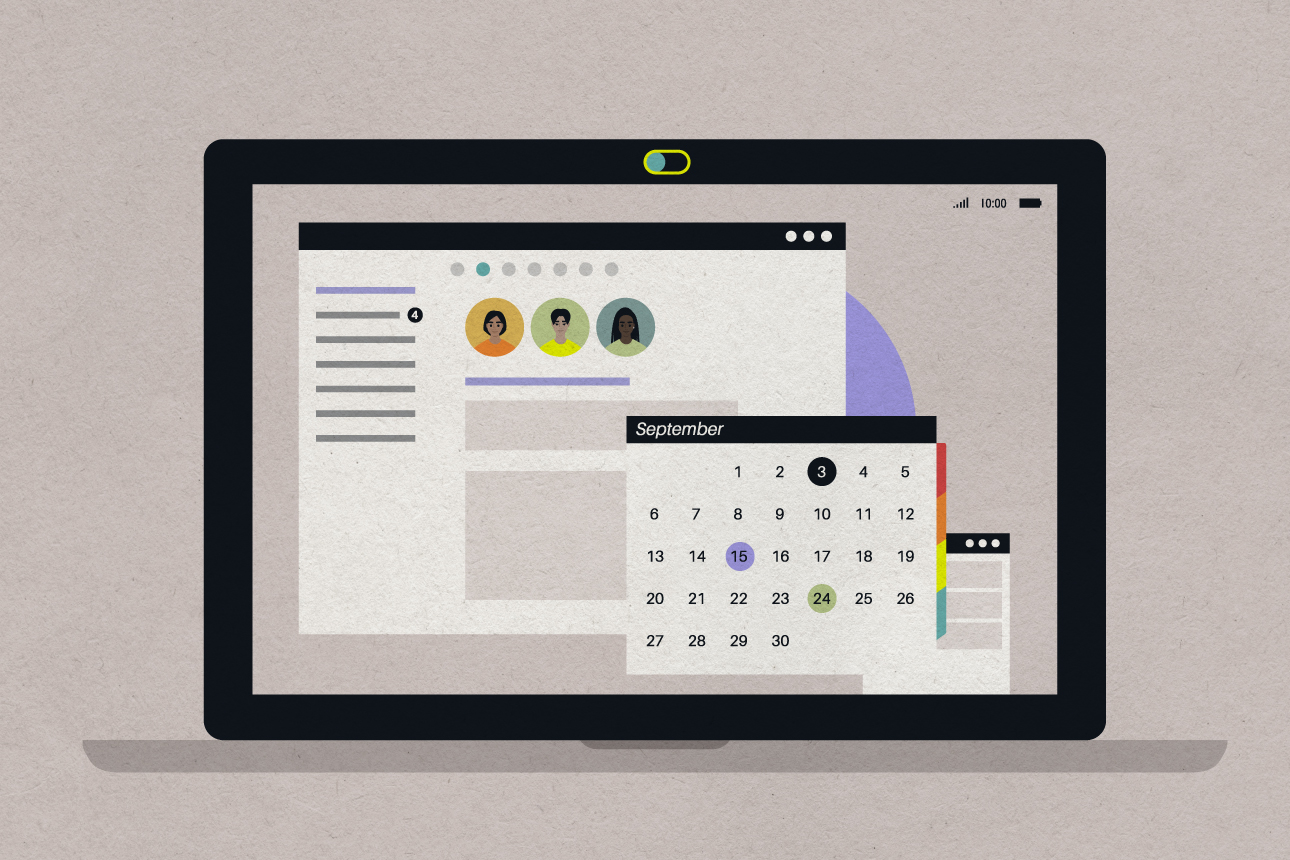Declare ‘Calendar Bankruptcy’ to Move Beyond Meeting-Driven Culture
How the Future Works, a new book from executives at Slack’s Future Forum, offers practical, concrete steps to building a flexible work culture that supports every employee.

It’s a ubiquitous complaint in corporate culture: Practically everyone is overwhelmed by meetings. And there are real questions about whether meetings are necessary to get things done, or if they are getting in our way far too often. In a survey of managers across a wide range of industries, researchers Leslie Perlow, Constance Hadley, and Eunice Eun found that more than 70% of people believed meetings were unproductive and inefficient, and 65% said meetings keep them from completing their work.1
It’s time to rethink the meeting. At Slack, our executives led by example on this by declaring “calendar bankruptcy.” They removed all recurring meetings and one-on-ones from their calendars so that they could consider each one and add back only what was truly necessary. In a message sent out to the entire company, the purpose was explained this way:
- “We’re in a new distributed world and gotta change the way we work.”
- “There are lots of legacy meetings that have changed owner, purpose, scope — let’s start with a blank slate to determine what’s really important.”
This doesn’t mean there are no more meetings. It just means that leaders got a lot more intentional about the time they were taking up on people’s calendars. We found that so many meetings could be eliminated or broken up into parts. For example, your monthly sales meeting might start with a status update. Why not send that out beforehand? Presentations can be shared as decks or asynchronous videos so people can review them in their own time. Tactics like these can lessen your meeting time considerably, and then time together can be more meaningfully spent on meaty discussions or team building. For this to happen, however, leaders have to be more intentional about meetings and employ some forethought and planning. As Priya Parker wrote in The Art of the Gathering, “Ninety percent of what makes a gathering successful is put in place beforehand.”
Dropbox uses what it calls its “3D” model for planning meetings: debate, discuss, decide. We would add a fourth D, for “develop” — time spent focused on honing individual skills or other professional development opportunities. If a meeting doesn’t achieve at least one of those four objectives, then it doesn’t need to be a meeting.
References
1. L.A. Perlow, C.N. Hadley, and E. Eun, “Stop the Meeting Madness,” Harvard Business Review 95, no. 4 (July-August 2017): 62-69.
